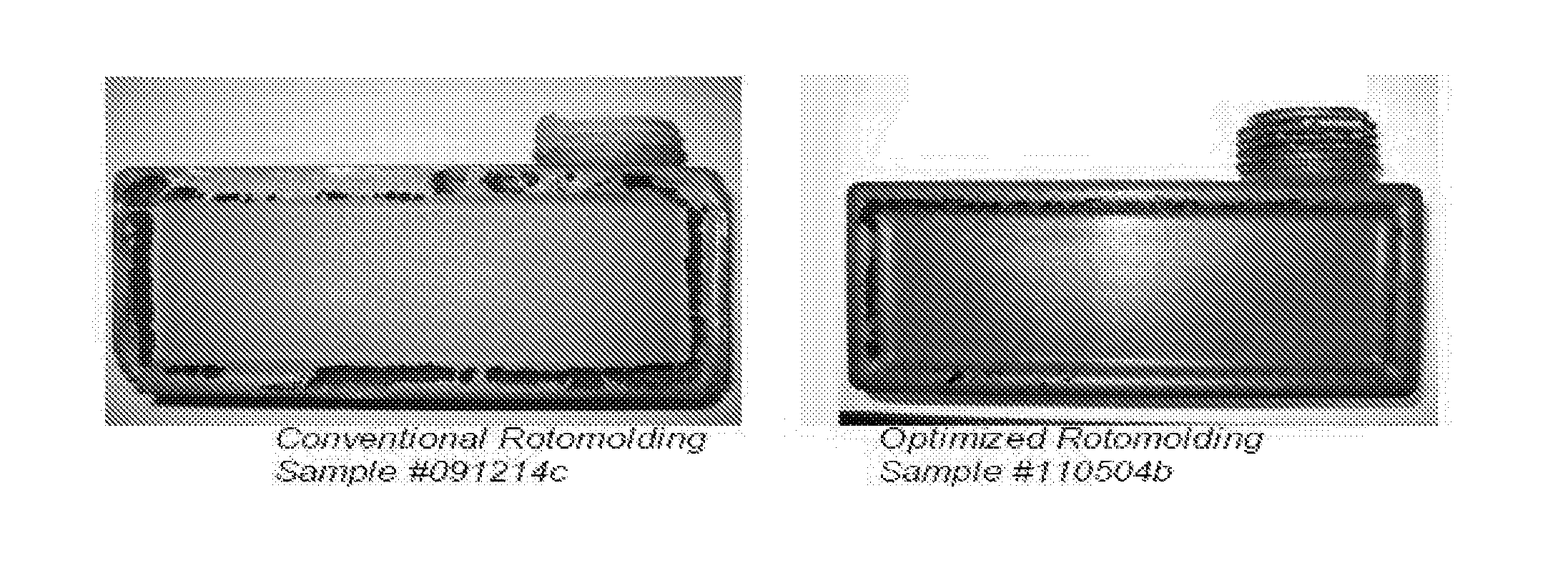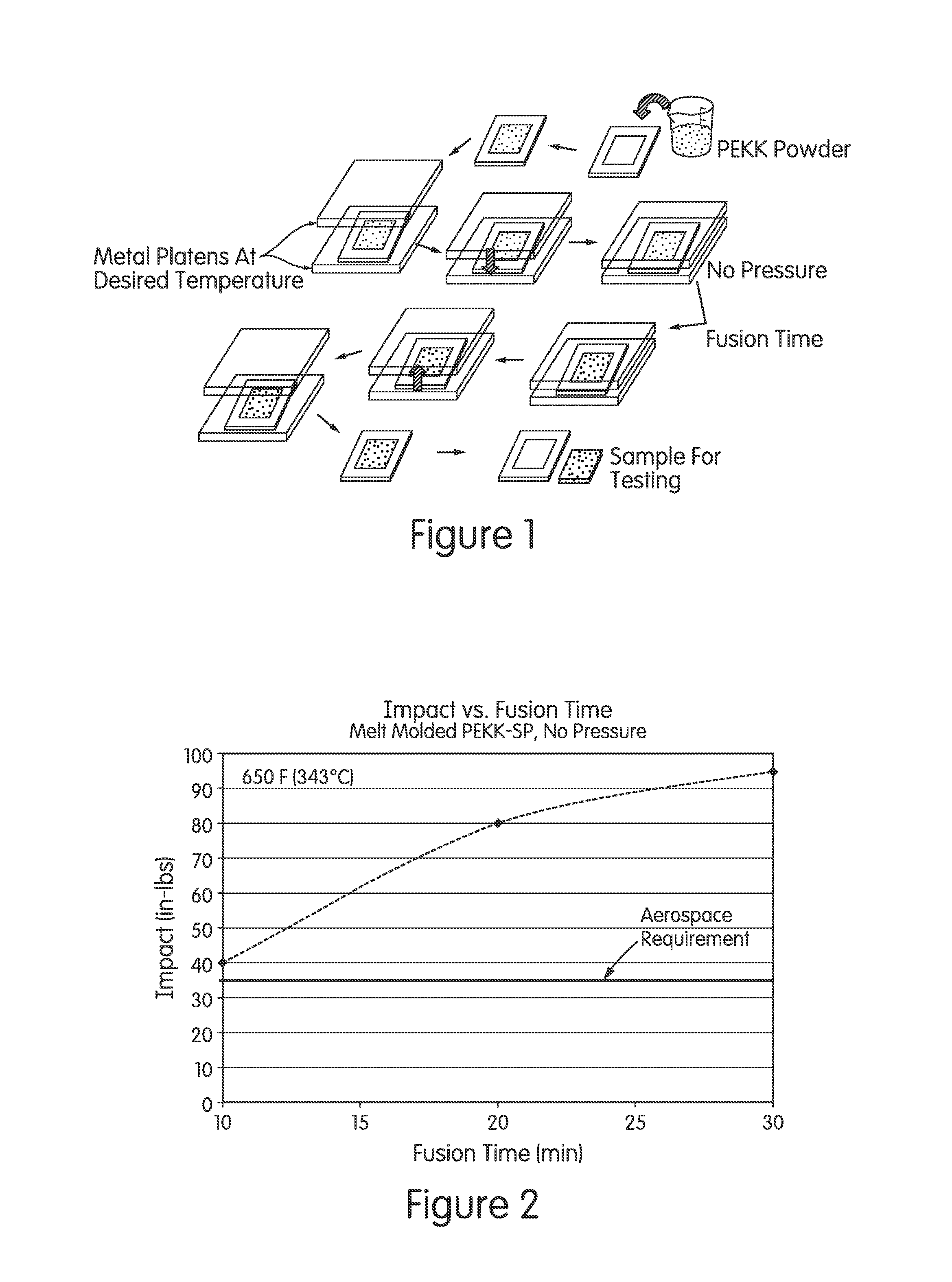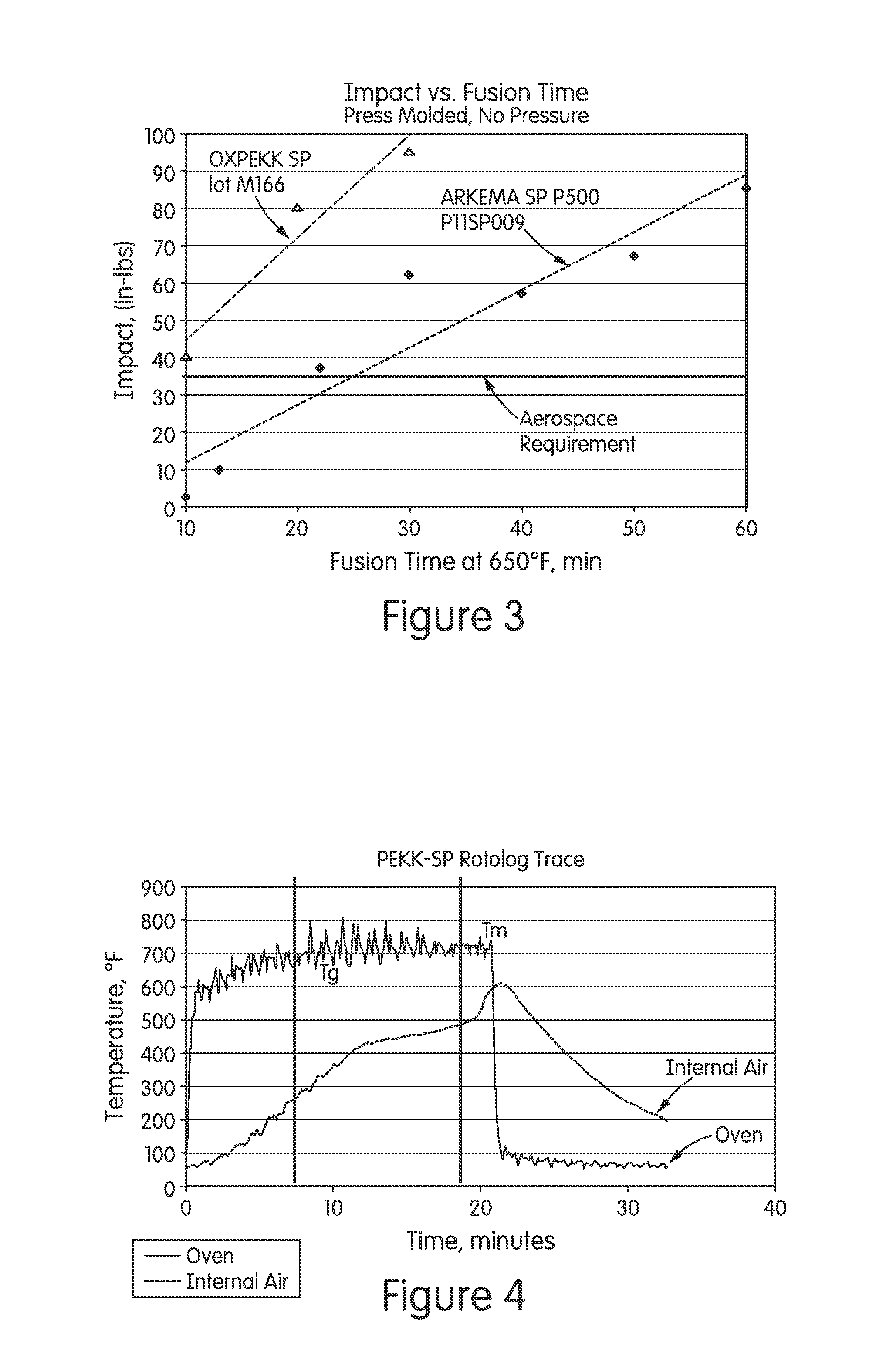Rotomolding processes for poly (aryl ketones) and other high temperature polymers
- Summary
- Abstract
- Description
- Claims
- Application Information
AI Technical Summary
Benefits of technology
Problems solved by technology
Method used
Image
Examples
example 1
Properties of “Stress-Free” Melt Molded PEKK Samples
[0050]In order to understand the ability of PEKK to deliver the required impact performance (35 in-lbs for 0.050″ thick specimens) a process for the production of “stress-free” samples was developed. The process is based on melt molding of PEKK polymer powders under a constrained geometry (dictated by a mold) without the application of a normal pressure (which is normally used in plastics melt molding techniques) to allow free flow of the polymer melt and reduce internal stresses created in the molding process. The process is depicted in FIG. 1.
[0051]Using this method, specimens were produced at various fusion times and the resulting impact strength was measured in 0.05″ samples. Results revealed that “stress-free” PEKK samples produced with OXPEKK SP lot M166 achieve the desired impact level (35 in-lbs) after only 10 minutes of fusion. As shown in FIG. 2, samples produced with longer fusion times (20, 30 minutes) displayed signifi...
example 2
Rotomolding Conditions
[0055]Methods described herein were conducted in a S.T.P. Lab 40 Rotomolding machine equipped with air and water cooling systems. The unit has high temperature capabilities with a maximum oven temperature of 700° F. (close to 370° C.). For this unit, rotation is available in two axes with specific computer control and data acquisition capabilities.
[0056]Initial fusion tests revealed the possibility of rotomolding PEKK at temperatures close to 625° F. (329° C.). In these experiments, small samples of PEKK powder were placed in an oven at constant temperature for a short period of time, typically around 5 minutes. Results suggested that higher temperatures (close to 650° F., 343° C.) promoted full melting of the powder, while insufficient melting and powder fusion was observed at lower temperatures (close to 600° F., 315° C.). At these conditions, a temperature close to 625° F. (329° C.) appeared to provide appropriate levels of powder interaction that would be f...
example 3
[0066]Bulk density is an extremely important parameter to improve the wall coverage and overall properties of a rotomolded part. Powder properties such as particle size, shape, and particle size distribution strongly influence the resulting appearance of a rotomolded part. For PEKK, experiments were conducted using reactor flake with a bulk density of approximately 170 g / L. The resulting part displayed poor wall coverage, which is believed to be due to the low bulk density of the powder, the high viscosity of the polymer, and the large particle size of the flake. This is shown in FIG. 9 for parts produced using a square tank mold (8″×3.5″×3.5″). In general, the flake appears to be too coarse for complete wall coverage. However, as shown in FIG. 9, the morphology is greatly improved with one of the rotomolding processes of the present invention described earlier. The appearance of the part obtained with a process of the present invention is dramatically increased and the ...
PUM
| Property | Measurement | Unit |
|---|---|---|
| Temperature | aaaaa | aaaaa |
| Temperature | aaaaa | aaaaa |
| Temperature | aaaaa | aaaaa |
Abstract
Description
Claims
Application Information
 Login to View More
Login to View More - Generate Ideas
- Intellectual Property
- Life Sciences
- Materials
- Tech Scout
- Unparalleled Data Quality
- Higher Quality Content
- 60% Fewer Hallucinations
Browse by: Latest US Patents, China's latest patents, Technical Efficacy Thesaurus, Application Domain, Technology Topic, Popular Technical Reports.
© 2025 PatSnap. All rights reserved.Legal|Privacy policy|Modern Slavery Act Transparency Statement|Sitemap|About US| Contact US: help@patsnap.com



